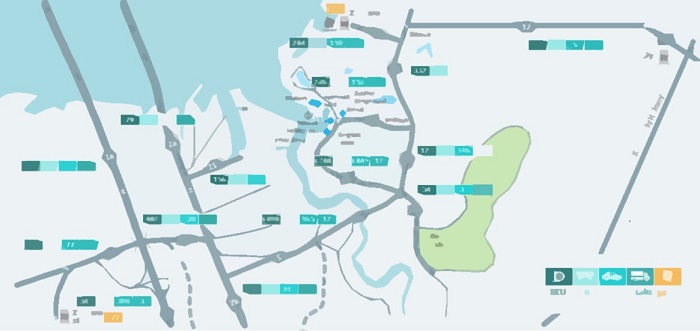Developing the transport master plan for a significant tourist PPP project

Our client, a private investor, has been in the process of designing a significant resort in a remote area of unparallel natural beauty and unique natural resources. The resort development includes hotels and apartment complexes of almost 2,000 rooms, villas, health and rehabilitation facilities, retail spaces, restaurants, a museum and auxiliary facilities.
To support the resort development, which is funded entirely by our client, the Government would develop all required transport, energy, and telecommunications infrastructure.
Thus, the transport Master Plan undertaken by M-Prime has been key in justifying the necessity and fit of the Government investments in transport and logistics infrastructure.
We were also asked to provide proposals for full transport infrastructure accessibility, for sustainable mobility, including the deployment of charging stations for Electric Vehicles, and for digital applications to support client experience related to transport.
The way to problem solvingThe approach for developing the transport & logistics master plan comprised three stages:
Modeling of the transport demand related to guests, visitors and workforce. This was based on guest and visitor demand forecasts, assumptions on their travel behavior (origin-destination), modal splits, routes they will use. In addition, workforce estimates and travel patterns were assumed. The resulting demand estimates were provided by year, mode and road segment.
Demand vs. Supply: Considering the background demand of the area, enhanced by the resort demand, we analyzed the ability of the existing transport infrastructure to address the total demand. We also estimated the supply chain requirements of the resort and the related facility. requirements to address these requirements.
Recommendations: For the existing transport infrastructure we proposed upgrades to address all bottlenecks identified by the previous stage. Furthermore, we proposed the development of new transport and logistics infrastructure and systems to serve all identified gaps.

- Validated the ability of the area’s airport to satisfy the increased demand
- Proposed upgrades in the existing road network, as well as construction of new access roads (with required bridges and tunnels) connecting the cruise ship port to be constructed in the area, the resort and all tourist sites. The new road network was sized appropriately and planned respecting the natural environment and the resort’s character
- Proposed the development of transport facilities (parking areas, load zones) in a) the cruise port, b) all tourist sites, and c) the resort itself.
- Proposed development of logistics facilities to serve the related demand
- Developed recommendations for a) full accessibility of the transport systems, b) digital tools to enhance customer experience in transport (CXT) and provide transport information and c) infrastructure for charging electric vehicles (cars, scooters, bikes).
Back
